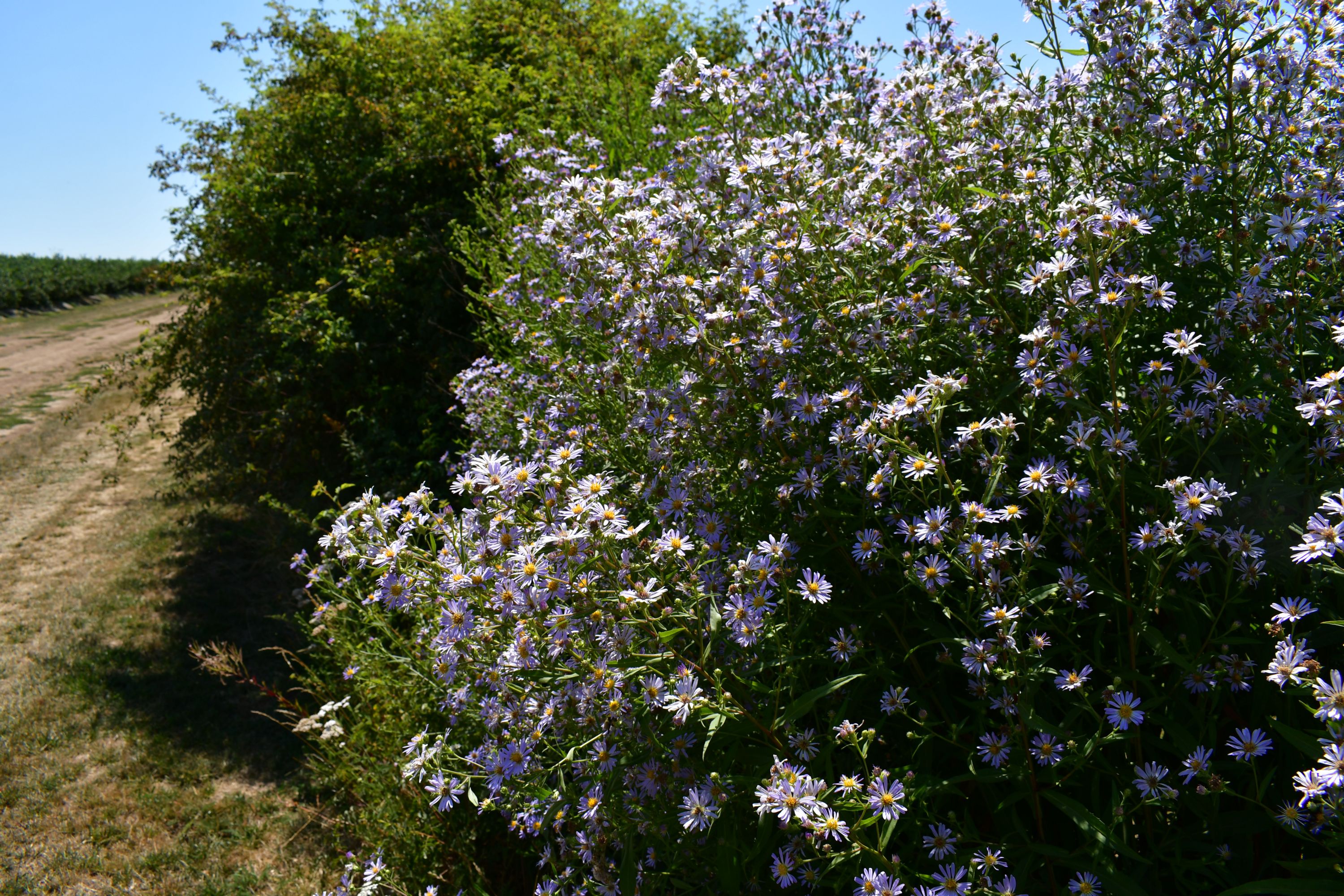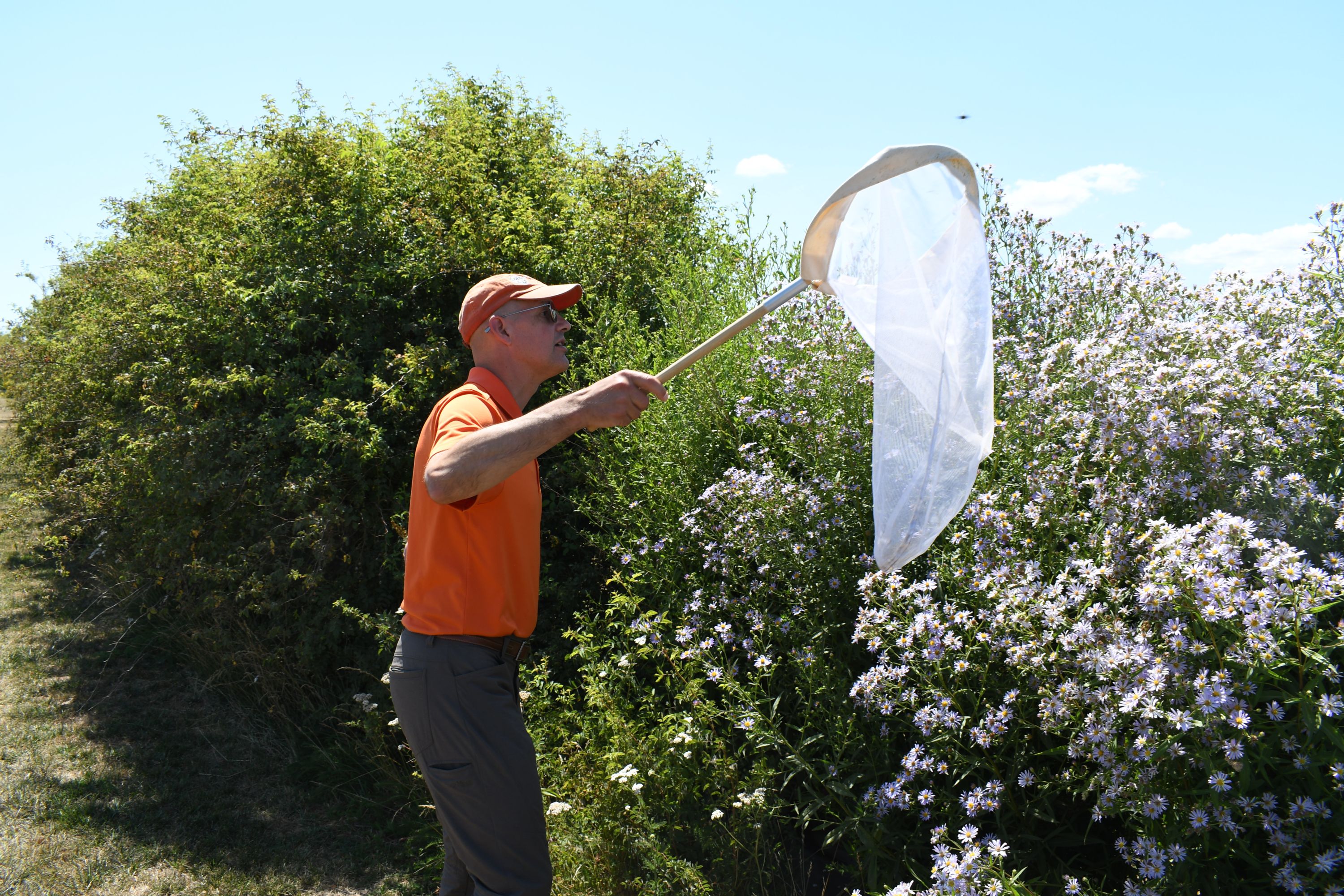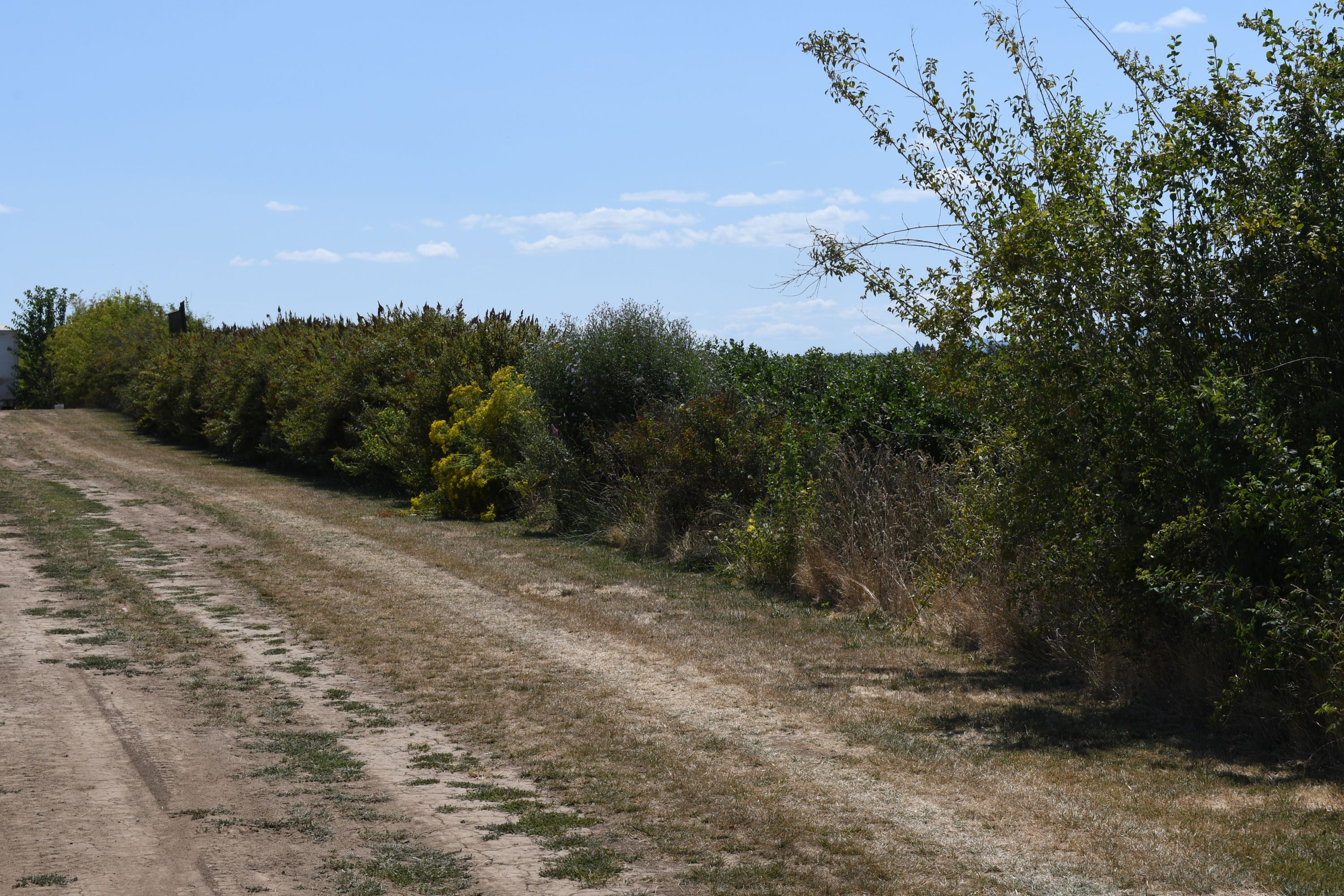A Humble Hedgerow Serves Pollinators and Beneficial Insects

In an expansive field of organically grown blueberries at Humbug Farms in Independence, Oregon, the most interesting rows aren’t blueberries at all.
Instead, they are carefully chosen rows of (mostly) native flowering shrubs that provide food and shelter to the bees and other pollinators that are critical to the crop, serve as habitat for beneficial insects that provide natural pest control, and act as a living laboratory for scientists at Oregon State University exploring the intersection of pollinator protection and pest management.
Not bad for humble hedgerows.
“This hedgerow is really the only one of its kind in the Pacific Northwest. It runs for miles through this blueberry field and there are several of them,” said Andony Melathopoulos, an associate professor of pollinator health extension at OSU. “It’s great because it’s stocked with plants that attract a range of both managed and wild bees.”
It’s bringing in the wild, native Oregon bees – and the free pollination services they provide – that’s really valuable.

“In Oregon, blueberries bloom when it’s still cold outside and sometimes honey bees have a hard time foraging in those temperatures and flying in the rain,” Melathopoulos explained. “But wild bees are a little more durable in our Pacific Northwest conditions and will soldier out when there’s a little bit of light drizzle and pollinate these blueberry plants.”
The hedgerow, filled with plants that bloom late into the summer, provides a steady food supply for those wild bees, encouraging them to stay in the area and allowing their population to build up to provide even more free pollination the next spring.
And – and this is critical – it was planned from the beginning to be easily managed by the farm.
Humbug Farms planted hedgerows in place of a blueberry row in the middle and at the edges of their fields. They were planted in the same base of sawdust and weed cloth as the blueberry bushes and are fed by the same drip irrigation lines. Once established, they don’t need much additional care, though the plants can be pruned at staggered intervals to extend the blooming season.
“The real success of this hedgerow that was put in by growers using technology that they're familiar and comfortable with,” Melathopoulos said. “It doesn’t require them to adopt some kind of strange management practice. It’s really integrated into the whole farm.”
Beyond the benefits for pollinators, the hedgerow affects insect populations in other ways, too.

“The plant selection not only excluded plants that would be host for pests, but it has plants that are building up the bee population and the beneficial insect population that is providing natural pest control back into this orchard,” Melathopoulos said. For instance, Humbug Farm purposely avoided plants known to be hosts for spotted-wing drosophila, a major fruit fly pest of blueberries, and the farm is also cooperating with efforts to introduce a tiny parasitic wasp from South Korea that is a natural enemy of that particular pest.
With a grant from the Western IPM Center, Melathopoulos produced videos, a podcast episode and grower-training materials highlighting the hedgerow as a case study of a way to combine integrated pest management and pollinator protection.
“The case studies show examples to growers around the region how you can get great pollination, that you can preserve pollinators – and not at the expense of having pest problems,” he said. “This is really at the heart of integrated pest management.”